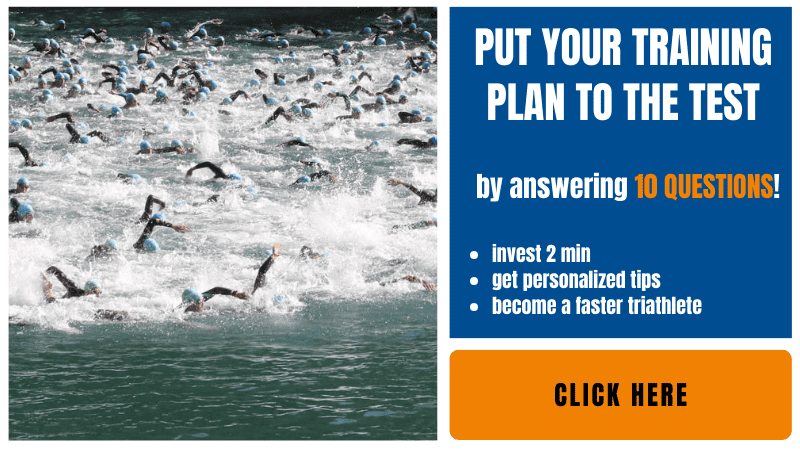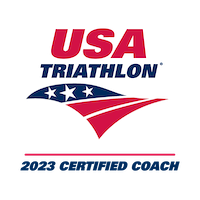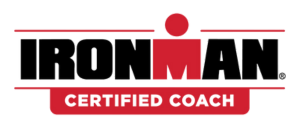Having the right gear on race day can make a big difference in how you enjoy the race. Some gear will make you faster, while others will increase your comfort. I listed below 20 essential gear ordered by when you will need them on race day.
This article is intended for triathletes who have already done a couple of triathlons. If you are on your way to your first triathlon, check this article instead.
Disclaimer: The Triathlon Tips of My Tri World are reader-supported. When you buy through links, I may earn an affiliate commission.
1. TRANSITION BAG
Probably my favorite gear during race week. When packing, I gather all my race kits around my transition bag and pack each item at its designated place.
As it fits all my triathlon gear, it is the only thing I need to carry on my back to transition. It comes extremely handy when the transition is far away from the parking places.
There are a couple of things to look for before buying one; my wife explained those in this article.
2. TRI SUIT
A tri suit is the only gear you will use from the start to the finish line of your races. Apart from looking more like a triathlete, a tri suit will make your life easier during the two transitions. You won’t need to worry about changing clothes!
Depending on the race distance and your personal preference, there are different types of tri suits (one-piece vs. two-piece, sleeve vs. sleeveless). I explained it in detail in this article.
3. SUNSCREEN
If you forget it on race day, you will definitely regret it! Also, make sure you apply the sunscreen once you have your race tri-suit on and not only a t-shirt (speaking from experience… 🙂 )
4. TRIATHLON WATCH
Whereas triathlon watches are not a must-have for beginner triathletes, they become really helpful once you are more into triathlon. I use mine every day for training but also on race day. I use my watch for the entire race, which is helpful to check my power, pace, and HR and analyze my performances afterward.
Many different options exist depending on the features you are looking for. I wrote an in-depth article to help you choose a triathlon watch; check it here.
5. TOWEL
Having a micro towel will come in handy in transition 1 for drying your feet quickly while you are getting ready.
6. SWIM GOGGLES
I can’t imagine swimming without them. After seeing a triathlete breaking his just before the start of a race, I plan now even to give a second pair to my wife.
There are a lot of models available. Currently, I am using a custom pair of themagic5 (website link, no affiliate), and I have to say I am positively surprised. The fit is remarkably good.
If you wear prescription glasses, you will be happy to read that prescription swim goggles also exist! Here is an article I wrote about them.
7. SWIMCAP
It is generally provided by the race organizer and mandatory in most races. If you want to use your own, you will need to wear the official one on top of it.
8. TRIATHLON WETSUIT
Whereas renting a triathlon wetsuit is a good option for your first race, it definitely makes sense to buy one at a certain point in time. Not all wetsuits are equal, and the most expensive ones are not always the best ones for you.
You can find more info in this article: 8 Things You Need To Know Before Buying A Triathlon Wetsuit
9. TRIATHLON BIKE OR ROAD BIKE WITH AERO BARS
Triathletes have mainly two options on race day: invest in a triathlon-specific bike or use a road bike with aero bars. The choice will depend on your budget and where you are usually training and racing.
If you are interested to learn more about triathlon bikes, head over to this article.
On the other hand, if you want to add aero bars to your road bike, check out this article.
10. HELMET
A helmet is simply mandatory in all triathlon races. Expect to pay anywhere between $50 to $100 for a standard road helmet. If you are after time, an aero helmet will make you gain roughly 40 seconds over a 40km distance (wind tunnel analysis from Specialized), but it will cost you anywhere between $200-$400.
11. SUNGLASSES
If you choose an aero helmet, you might have a visor included. In this case, you will use your sports sunglasses only on the run.
12. CYCLING SHOES
If not done already, I would highly suggest using clipless pedals and specific cycling shoes. Those shoes are stiff and help you better transfer the energy you are putting into the pedals.
For race day, you can use your standard road shoes or invest in a pair of triathlon-specific shoes. Here is an article that will help you decide: What Makes Triathlon Cycling Shoes Special.
13. POWER METER
Power meters are extremely useful for triathletes once you learn how to use them. They provide information on your actual performance, which is unaffected by external conditions and hence can improve your training and racing quality. I wrote a full article about them: Are Power Meters Useful For Triathletes?
14. BIKE REPAIR KIT
There are a couple of options to carry a bike repair kit: in an integrated storage place found on some triathlon bikes, in a specific bottle that goes into a standard mount cage, or in a small saddlebag.
I currently use the Castelli mini saddlebag (Amazon Affiliate Link). It looks really small on the bike and at the same time has enough space for a tiny hand pump, a lightweight innertube, a CO2 inflator and cartridge, two small tire levers, a multi-tool, some cash, and a chain-link.
15. HYDRATION SYSTEM
Depending on the race distance and also on how many aid stations you will have on the bike course, you will need to carry more or less hydration (and nutrition) on your bike.
If you don’t have a specific hydration system, have a look at this article I wrote: 15 Different Ways To Carry Water And Food During A Triathlon
16. RACE NUMBER BELT
The main purpose of those belts is to attach your bib number. You can find all types of race belts, from a simple string to a belt that will hold a water bottle and nutrition. You can expect to pay roughly between $10 to $30.
I am currently trying the one from Kitbrix (Amazon Affiliate Link), which is easily adjustable, but at the same time, holds in place. There are also some holes to take up to 6 gels with you.
17. RUNNING HAT OR VISOR
Having a hat or a visor will help you keep your head cool on hot days.
18. SOCKS
There is a big debate amongst triathletes on whether to use socks. You will lose time by putting socks on but will have a more comfortable run. If you are not after a podium, I personally think it is not worth it to bother; just put socks on.
If you are unsure about what to do, check this article for more detail: Socks vs. No Socks: The Question In Every Triathlete’s Head
19. RUNNING SHOES + ELASTIC SHOELACES
It might be a simple piece of gear, but it is worth taking your time before buying a pair. Ideally, make a foot analysis and buy a pair that fits you. Most pros and top age groupers are now using carbon plate shoes. I have yet to try it on race day.
An easy way to save 10 seconds during the transition is to add elastic shoelaces. They are relatively cheap ($10-$20) and do not require you to tie your laces.
I personally bought the Xtenex shoelaces (Amazon Affiliate Link) at a triathlon expo. I have no problem recommending them. Otherwise, you will find a lot of other options online.
20. POST-RACE CLOTHES
Apart from sweat, you might be completely wet or muddy. So make sure you have some warm clothes waiting for you after the race. I would also highly recommend a second pair of shoes or flip-flops for recovery. I use the OOFOS Ooriginal Sandal (Amazon Affiliate Link) that I received as a gift. I can tell you I can’t wait to put them on after a race (or even a hard run workout).
I hope this article gives you a better idea of what you need for race day. It might be daunting when you see all gears experienced triathletes have but keep it simple: invest in what you can afford and upgrade over the years.



